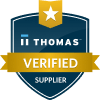How Do Antifoaming Agents Work
For most fluid systems, foam control is a challenge to overcome. Pure liquids do not foam. In an aqueous system, contaminants such as surfactants, proteins, […]
What Is a Defoamer?
For most fluid systems, foam control is an interesting challenge to overcome. Pure liquids do not foam or will not form a stable foam. In […]


